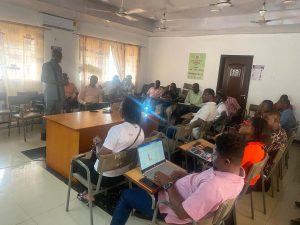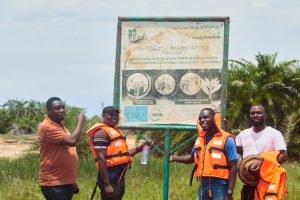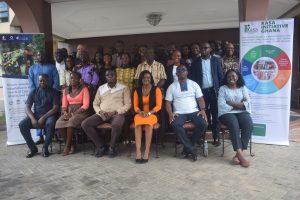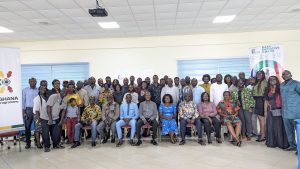Arguably, the most heartbreaking environmental scandal to have hit Ghana recently is the damning report on how “a massive institutionalized scheme of timber trafficking” enabled by an alleged high-level corruption and collusion has resulted in the loss of about 6 million rosewood trees through illegal logging and the abuse of timber rights allocation permit. The seven-year plundering of this endangered species and its associated forest is happening at a time when Ghana is losing its forest cover at a rate of 3% per annum (320,803 ha/year) ; is predicted to start importing timber in few years should the current rate of depletion continue; and is experiencing the stark reality of the negative impacts of climate change such as long drought spells and erratic rainfall.
Undoubtedly, the insatiable demand for rosewood (Pterocarpus spp.) in China has fueled its racketeering in Ghana and West African range countries. Countries like Cote D’Ivoire, Gambia and Guinea seem to have been stripped of the species. Currently, Ghana and Sierra Leone still experience ongoing plundering of the species. But is it that, Ghana has done nothing to protect the species from plunder? To be fair, measures has been taken by the Ministry of Lands and Natural Resources and the Forestry Commission (FC) to curb the illegal exploitation of rosewood. Over the past 7 years, as many as five different felling and export bans have been imposed, including its listing/up-listing on CITES Appendices 3 and 2 with the objective of ensuring sustainable and legal transnational trade of the species. Now, if all these have been done, then, what has brought us to this point such as to warrant an international expose´ by an environmental crime investigation agency? Well, we are here because of alleged corruption, institutional failure and abuse, poverty and dwindling economic opportunities. Let me elaborate on these key factors below:
Corruption
The age-old nemesis of Ghana’s development, corruption as usual has taken its seat at the table of the illicit exploitation of rosewood in Ghana. Politicians, traditional authorities, forestry, police and customs officials, and citizens within and outside of the local communities where the plundering is taken place have all sipped gleefully the corruption wine. To put into perspective, come to think of it, how do rosewood traffickers locate, identify, fell, haul, transport and export their consignment of rosewood logs if not with the aided of local people, and regulatory and law enforcement officers? In fact, attracted by the lucrativeness of the species, some traditional authorities and landowners in northern Ghana where rosewood is endemic have been accused of granting access to lands for the felling of rosewood without regard to timber exploitation laws. Peter Andoh, an assistant district forest manager in Tumu blamed some chiefs and landowners for recent felling of rosewood in the area under his management in an interview aired on GTV . Referring to the chiefs and landowners, he said “I saw stumps of felling that has been done last year (referring to 2017) captured on data and paid for”. “But, is that the right way”, he quipped. Also, consider the granting of permits to about 100 companies to salvage just 3,000 cubic meters of rosewood in 2017. Is this not mind-boggling considering that, on the average each company will be engaged in an economically unprofitable business of producing only 30 cubic meters of rosewood. No professionally-trained forester will give this large number of permits to chase such a paltry volume of timber were it not pressure from politicians or influential persons in authority. Likewise, no company worth its salt would accept to salvage such a small volume of rosewood knowing that, it is not financially viable. Nonetheless, the companies gladly received the permits knowing that the permit is just a pass to ‘lawfully but awfully’ harvest as much as they can without being called to account.
Institutional failure and abuse
By institution, I refer to the norms, customs, conventions, laws, regulations and processes that govern timber exploitation in Ghana. First of all, logging is prohibited in the Savanna ecosystem (where the plunder is taken place) due to its ecologically fragile nature. So it beats my imagination as to why continuous and widespread logging would be allowed in this area if not for a short term salvaging of trees for the reason of development. Second, is the abuse and misapplication of the Salvage Permit (SP) system, and disregard for conditions that provide for its proper and responsible use. SP is granted to: (i) salvage trees from an area of land undergoing development such as road construction, expansion of human settlement or cultivation of farms; (ii) salvage abandoned trees (marked or unmarked). Despite these clearly-stated conditions, some letters given to companies to salvage rosewood sighted by Forest Watch Ghana revealed that, none of the salvage conditions have been met. Besides, requirements such as pre-salvage inspection to ascertain species and volumes to be salvaged, and to advice the Office of the Chief Executive of FC prior to the preparation of SP; and post- salvage inspection to verify adherence to the content of the SP are not duly followed thereby, leading to the abuse of the salvage permit system. The failure to adhere to these requirements is tantamount to issuing a blank ‘cheque’, which indirectly authorizes companies to log as much as they can. The phenomenon led Mumuni Yahaya, President of Sissala Youth Forum upon witnessing as many as 173 trucks of rosewood exit the district (Sissala East) within 3 months (February-April, 2018), to lament: “What kind of salvaging are we talking about…” All these speak to the failure and abuse of institutions meant to protect the resources.
Rural poverty
The areas where rosewood is endemic and experiencing illicit exploitation, northern Ghana is the poorest area in Ghana with poverty rate of 55-71%. According to GLSS7, this region accounts for 67% of those living in extreme poverty. Extreme poverty is defined as “the state where the standard of living is insufficient to meet the basic nutritional requirements of the household even if they devote their entire consumption budget to food”. In other words, it refers to households whose welfare falls below the extreme poverty line of GH¢ 792 (in 2012/13 prices) per adult equivalent per year; or less one $1/day. Clearly, poverty is rife and economic opportunities to meet basic livelihood needs are sorely lacking in this region. This leaves the people vulnerable to been used by traffickers while, they themselves engage in illicit exploitation of the species to meet and improve their livelihood. Engagement in rosewood exploitation affords a local logger $32 per cubic meter of rosewood while, a local merchant makes $129, and a middle man $500. Compare living on less than $1/day to making $32-129 on just one cubic meter of rosewood. Even if you are a saint, you will be tempted to join in considering your impoverished state. Since most of us are not saints, what can we expect? In certain places like Buipe and Damongo, divisional chiefs received royalty payment or allowance; same as the police, technical officers of the Forestry Commission while, some District Assemblies collected fees per truckload when the exploitation was at its peak in 2013-2014. The fact is that, the exploitation of the species has created some form of local economy generating employment and income for local loggers, porters, drivers, etc. Indeed, so long as there is widespread poverty, few economic opportunities, inadequate social intervention programmes to address the poverty and livelihood needs in rosewood endemic areas, it will be difficult to keep them off the resources.
Having considered some keys factors underlying the rosewood menace, the questions that remain are, would the Environmental Investigation Agency’s expose´ have consequences for Ghana; and what should be done in response to the expose´ and the future sustainability of rosewood? I will address these questions in subsequent articles.
William K. Dumenu
wdumenu@cisr-forig.org.gh






